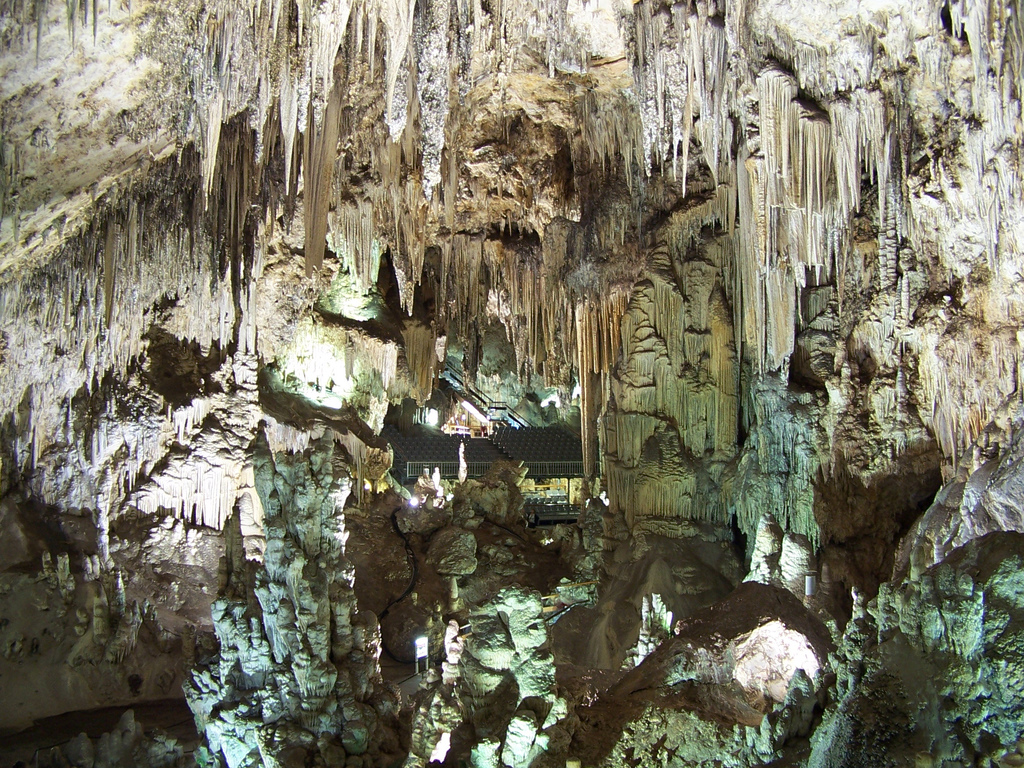Nerja is located by the sea, at a distance of around 50 kilometers from Malaga. It lies on the N340 coastal highway region. Nerja demarcates the easternmost point of Costa del Sol, Málaga. The town holds 12000 inhabitants in recent times where as earlier it used to be just an insignificant fishing area.
16 kilometers of shimmering sandy beaches as well as crystal clear water are the prime attractions of the village. Water skiing, scuba diving, sailing and many such other games are undertaken in the particular region.
The town is adorned with the gorgeous mountain, Sierra Almijara on the eastern side and the town has, till now, been successful in warding oiff the shadows of the huge skyscrapers that have resulted in certain coastal areas due to the rush of tourists. The town still holds on to its ancient structures- the old section has its curved and crooked lanes, homes painted white and their wrought iron terrace gardens adorned with geraniums. One can sometimes spot a canary sitting on these terraces and singing beautifully……
Balcón de Europa, or the “Balcony of Europe” is the center of attraction of Nerja. It is an amazing walkway located next to a cliff. Earlier a Moorish castle was located in this definite site. It offers a wide and gorgeous sight of the Mediterranean Sea along with the beaches and little inlets. This is set against the vast mountain range- all in one beautiful picture.
Several restaurants, cafes and other eateries are available here and one can select as according to his or her desire; horse- drawn carriages are available such that tourists can tour the most romantic nooks of Nerja. The 17th century Church of El Salvador that boasts of a blend of Moorish or mudéjar as well as a baroque form of architecture and also the wonderful Gardens of Capistrano Playa that goes down to the Burriana beach are some of the chief attractions of the place.
But it is the gorgeous caves grab all the attention of the tourists in Nerja. These are situated at a distance of just three kilometers from the main town. Paintings of around 20000 years back as well as other archaeological artifacts are the caves’ prized possessions. A concert hall has been made of one of the largest caves and several shows are held there, especially in the summer months. The 38th International Cave Festival will be held this year and several famous performers will present their shows.
De La Doncella (red mullet) and pescaito frito (fried fish) are few of the delicacies available at Nerja – food of all kinds and types are found here right from exquisite continental dishes to the regular sausage, chips and eggs.
Nerja, lying 50 kilometers from Málaga, is linked via a dual carriage motorway to the western section of the Costa del Sol. It is an hour ride from Marbella and a half an hour ride from Málaga.
The caves form the chief spectacle of Nerja. They are about a kilometer from the town center and are believed to hold many riddles and cooped up secrets. It is quite an easy ride to the caves and tourists can explore this wonderful attraction. The caves have now become national monuments; situated against the mountain range, the caves do contribute much to the culture and heritage of Nerja.
Keep an hour in hand when you are going to the caves – however only a third of the total number of halls are open for tourists. These include the Entrance Hall, the Ballet Hall, the Phantoms Hall, the Créche Hall, the Cataclysm Hall as well as the Elephant Eye-Tooth Hall. It was in 1960 that the halls were explored and found out; in 1970 the New galleries were spotted. Visitors, moving in small gatherings, can move in and out of the halls as well as the galleries.



